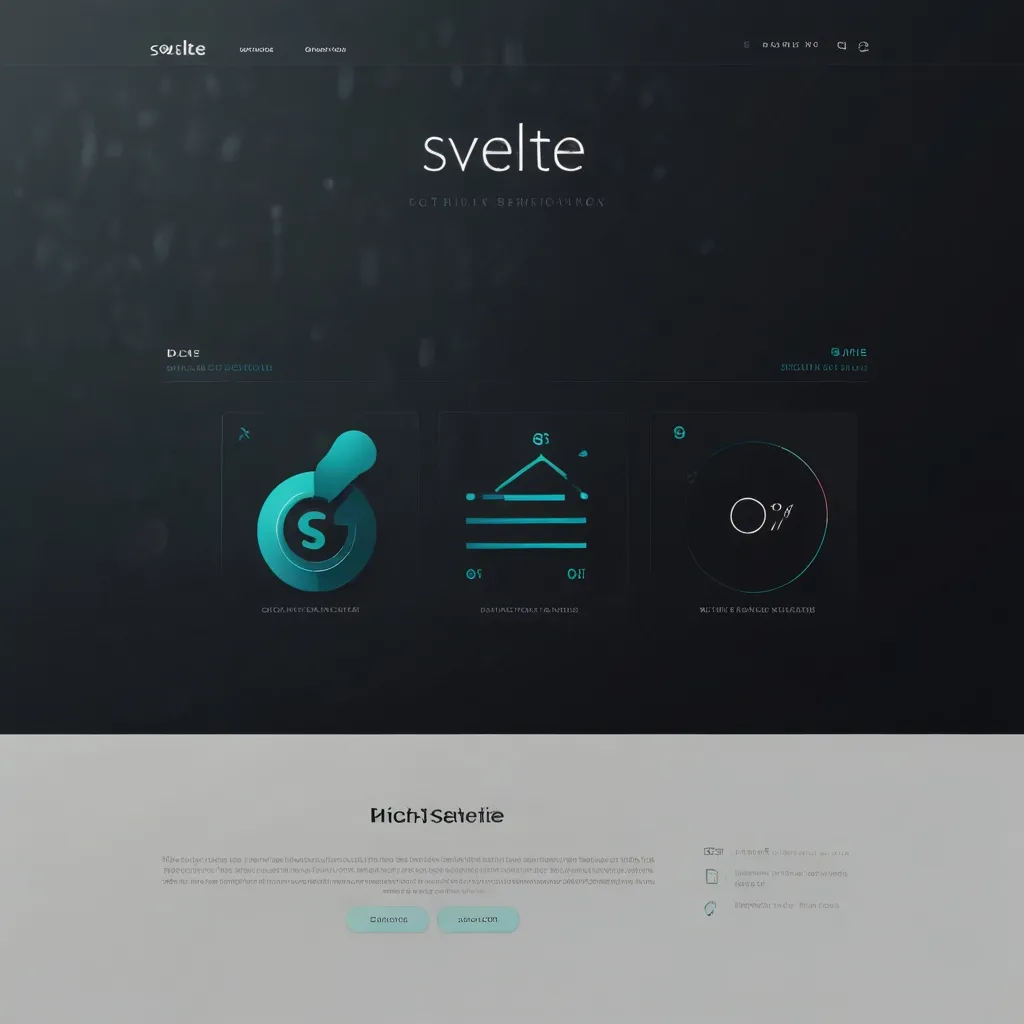In the world of modern web development, RESTful APIs have become the backbone of countless applications. As a seasoned developer, I’ve learned that creating APIs that are both secure and scalable is crucial for long-term success. Over the years, I’ve honed my skills and developed strategies that have proven effective in building robust APIs. Let me share my insights and experiences with you.
Authentication and Authorization are paramount when it comes to API security. I always implement a robust authentication mechanism to verify the identity of clients making requests to my APIs. JSON Web Tokens (JWT) have been my go-to choice for this purpose. They’re stateless, compact, and can securely transmit information between parties as a JSON object.
Here’s a simple example of how I implement JWT authentication in a Node.js application using the jsonwebtoken library:
const jwt = require('jsonwebtoken');
const secretKey = 'mySecretKey';
// Generate a token
const token = jwt.sign({ userId: 123 }, secretKey, { expiresIn: '1h' });
// Verify a token
jwt.verify(token, secretKey, (err, decoded) => {
if (err) {
console.log('Invalid token');
} else {
console.log('Valid token. User ID:', decoded.userId);
}
});
Once authentication is in place, I focus on authorization. This involves determining what actions an authenticated user is allowed to perform. I typically use role-based access control (RBAC) to manage permissions effectively.
Input validation and sanitization are critical for preventing security vulnerabilities like SQL injection and cross-site scripting (XSS) attacks. I make it a point to validate and sanitize all input data before processing it. Libraries like express-validator for Node.js have been invaluable in this regard.
Here’s how I use express-validator to validate input in an Express.js application:
const express = require('express');
const { body, validationResult } = require('express-validator');
const app = express();
app.post('/user',
body('username').isLength({ min: 5 }),
body('email').isEmail(),
(req, res) => {
const errors = validationResult(req);
if (!errors.isEmpty()) {
return res.status(400).json({ errors: errors.array() });
}
// Process the request
}
);
HTTPS encryption is non-negotiable for me when it comes to API security. It ensures that all data transmitted between the client and server is encrypted, preventing man-in-the-middle attacks. I always obtain and configure SSL/TLS certificates for my APIs, even during development.
Rate limiting is a strategy I employ to prevent abuse and ensure fair usage of my APIs. It helps protect against DDoS attacks and ensures that no single client can overwhelm the server with requests. I typically implement rate limiting based on IP address or API key.
Here’s an example of how I implement rate limiting using the express-rate-limit middleware:
const rateLimit = require('express-rate-limit');
const limiter = rateLimit({
windowMs: 15 * 60 * 1000, // 15 minutes
max: 100 // limit each IP to 100 requests per windowMs
});
app.use(limiter);
When it comes to scalability, I’ve found that proper API versioning is crucial. It allows me to make changes and improvements to my API without breaking existing client integrations. I typically include the version number in the URL path or as a custom header.
Here’s how I implement API versioning in an Express.js application:
const express = require('express');
const app = express();
const v1Router = express.Router();
const v2Router = express.Router();
v1Router.get('/users', (req, res) => {
res.send('This is the v1 users endpoint');
});
v2Router.get('/users', (req, res) => {
res.send('This is the v2 users endpoint');
});
app.use('/api/v1', v1Router);
app.use('/api/v2', v2Router);
Caching is another strategy I employ to improve the scalability and performance of my APIs. By caching frequently accessed data, I can reduce the load on my database and improve response times. I often use Redis as an in-memory data store for caching.
Here’s a simple example of how I implement caching with Redis in a Node.js application:
const redis = require('redis');
const client = redis.createClient();
function getUser(userId) {
return new Promise((resolve, reject) => {
client.get(`user:${userId}`, (err, result) => {
if (result) {
resolve(JSON.parse(result));
} else {
// Fetch user from database
const user = fetchUserFromDB(userId);
client.setex(`user:${userId}`, 3600, JSON.stringify(user));
resolve(user);
}
});
});
}
Pagination is essential for handling large datasets efficiently. I always implement pagination in my APIs to limit the amount of data returned in a single request. This not only improves performance but also provides a better user experience.
Here’s how I typically implement pagination in my APIs:
app.get('/users', (req, res) => {
const page = parseInt(req.query.page) || 1;
const limit = parseInt(req.query.limit) || 10;
const startIndex = (page - 1) * limit;
const endIndex = page * limit;
const results = {};
if (endIndex < users.length) {
results.next = {
page: page + 1,
limit: limit
};
}
if (startIndex > 0) {
results.previous = {
page: page - 1,
limit: limit
};
}
results.results = users.slice(startIndex, endIndex);
res.json(results);
});
Proper error handling and logging are crucial for maintaining and debugging APIs. I always implement comprehensive error handling to provide meaningful error messages to clients and log detailed error information for debugging purposes.
Here’s an example of how I handle errors in an Express.js application:
app.use((err, req, res, next) => {
console.error(err.stack);
res.status(500).send('Something broke!');
});
// Custom error handler
function handleErrors(err, req, res, next) {
if (err instanceof ValidationError) {
return res.status(400).json({ error: err.message });
}
if (err instanceof AuthenticationError) {
return res.status(401).json({ error: 'Authentication failed' });
}
// Handle other types of errors
next(err);
}
app.use(handleErrors);
Documentation is often overlooked, but I consider it a critical component of a scalable API. Well-documented APIs are easier for developers to understand and integrate with. I use tools like Swagger to automatically generate API documentation from my code.
Here’s an example of how I use Swagger for API documentation in an Express.js application:
const express = require('express');
const swaggerJsdoc = require('swagger-jsdoc');
const swaggerUi = require('swagger-ui-express');
const app = express();
const options = {
definition: {
openapi: '3.0.0',
info: {
title: 'My API',
version: '1.0.0',
},
},
apis: ['./routes/*.js'],
};
const specs = swaggerJsdoc(options);
app.use('/api-docs', swaggerUi.serve, swaggerUi.setup(specs));
Monitoring and analytics are essential for maintaining the health and performance of APIs. I use tools like Prometheus and Grafana to monitor key metrics such as response times, error rates, and resource utilization. This helps me identify and address issues before they become critical.
Here’s an example of how I set up basic monitoring in an Express.js application using the prom-client library:
const express = require('express');
const promClient = require('prom-client');
const app = express();
// Create a Registry which registers the metrics
const register = new promClient.Registry();
// Add a default label which is added to all metrics
register.setDefaultLabels({
app: 'my-api'
});
// Enable the collection of default metrics
promClient.collectDefaultMetrics({ register });
// Define a custom metric
const httpRequestDurationMicroseconds = new promClient.Histogram({
name: 'http_request_duration_seconds',
help: 'Duration of HTTP requests in seconds',
labelNames: ['method', 'route', 'code'],
buckets: [0.1, 0.3, 0.5, 0.7, 1, 3, 5, 7, 10]
});
// Register the custom metric
register.registerMetric(httpRequestDurationMicroseconds);
// Expose metrics endpoint
app.get('/metrics', async (req, res) => {
res.set('Content-Type', register.contentType);
res.end(await register.metrics());
});
Implementing these strategies has significantly improved the security and scalability of my APIs. However, it’s important to remember that building secure and scalable APIs is an ongoing process. As new threats emerge and technologies evolve, I continually reassess and update my approaches.
One of the most valuable lessons I’ve learned is the importance of designing APIs with scalability in mind from the outset. It’s much easier to build a scalable API from the ground up than to retrofit scalability into an existing system. This means considering factors like future growth, potential bottlenecks, and system architecture from the very beginning of the development process.
I’ve also found that adopting a microservices architecture can greatly enhance the scalability of APIs. By breaking down a monolithic application into smaller, independently deployable services, I can scale different components of the system independently based on their specific needs. This approach also improves fault isolation and makes it easier to update and maintain individual parts of the system.
However, microservices come with their own set of challenges. Managing the increased complexity of distributed systems requires robust service discovery, load balancing, and inter-service communication mechanisms. I’ve had success using tools like Kubernetes for container orchestration and service mesh solutions like Istio for managing microservices.
Here’s a simple example of how I might define a Kubernetes deployment for a microservice:
apiVersion: apps/v1
kind: Deployment
metadata:
name: my-api
spec:
replicas: 3
selector:
matchLabels:
app: my-api
template:
metadata:
labels:
app: my-api
spec:
containers:
- name: my-api
image: my-api:latest
ports:
- containerPort: 3000
Another strategy I’ve found effective is the use of asynchronous processing for time-consuming tasks. By offloading heavy computations or I/O-intensive operations to background workers, I can keep my API responsive even under high load. Message queues like RabbitMQ or Apache Kafka are excellent tools for implementing this pattern.
Here’s an example of how I might use a message queue to handle asynchronous tasks in a Node.js application:
const amqp = require('amqplib');
async function sendTask(task) {
const connection = await amqp.connect('amqp://localhost');
const channel = await connection.createChannel();
const queue = 'task_queue';
await channel.assertQueue(queue, { durable: true });
channel.sendToQueue(queue, Buffer.from(JSON.stringify(task)), { persistent: true });
console.log(" [x] Sent '%s'", task);
await channel.close();
await connection.close();
}
async function processTask() {
const connection = await amqp.connect('amqp://localhost');
const channel = await connection.createChannel();
const queue = 'task_queue';
await channel.assertQueue(queue, { durable: true });
channel.prefetch(1);
console.log(" [*] Waiting for messages in %s. To exit press CTRL+C", queue);
channel.consume(queue, function(msg) {
const task = JSON.parse(msg.content.toString());
console.log(" [x] Received %s", task);
// Process the task
channel.ack(msg);
}, { noAck: false });
}
// In your API route
app.post('/task', async (req, res) => {
await sendTask(req.body);
res.send('Task received');
});
// In your worker process
processTask();
Database optimization is another crucial aspect of building scalable APIs. I pay close attention to database design, indexing, and query optimization. For read-heavy applications, I often implement database replication to distribute the load across multiple servers. For write-heavy applications, I might consider database sharding to partition data across multiple machines.
Here’s an example of how I might set up database replication in a Node.js application using MySQL:
const mysql = require('mysql2');
const primaryPool = mysql.createPool({
host: 'primary-db.example.com',
user: 'user',
password: 'password',
database: 'mydb'
});
const replicaPool = mysql.createPool({
host: 'replica-db.example.com',
user: 'user',
password: 'password',
database: 'mydb'
});
function executeQuery(sql, params) {
return new Promise((resolve, reject) => {
if (sql.toLowerCase().startsWith('select')) {
replicaPool.query(sql, params, (error, results) => {
if (error) reject(error);
else resolve(results);
});
} else {
primaryPool.query(sql, params, (error, results) => {
if (error) reject(error);
else resolve(results);
});
}
});
}
Load testing is an essential part of my development process. It helps me identify performance bottlenecks and ensure that my APIs can handle expected loads. I use tools like Apache JMeter or Gatling to simulate various load scenarios and measure the performance of my APIs under stress.
Finally, I’ve learned the importance of continuous integration and deployment (CI/CD) in maintaining secure and scalable APIs. Automated testing, security scans, and deployment processes help ensure that each change to the API is thoroughly vetted before being pushed to production. This not only improves the quality and reliability of the API but also allows for faster iteration and deployment of new features and fixes.
In conclusion, building secure and scalable RESTful APIs is a complex but rewarding challenge. It requires a holistic approach that considers security, performance, architecture, and operational aspects. By implementing these strategies and continuously learning and adapting, I’ve been able to create APIs that are not only robust and efficient but also capable of growing and evolving with the needs of the application and its users. Remember, the journey doesn’t end with deployment - monitoring, maintenance, and continuous improvement are key to long-term success in API development.






